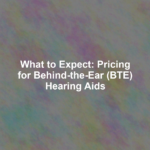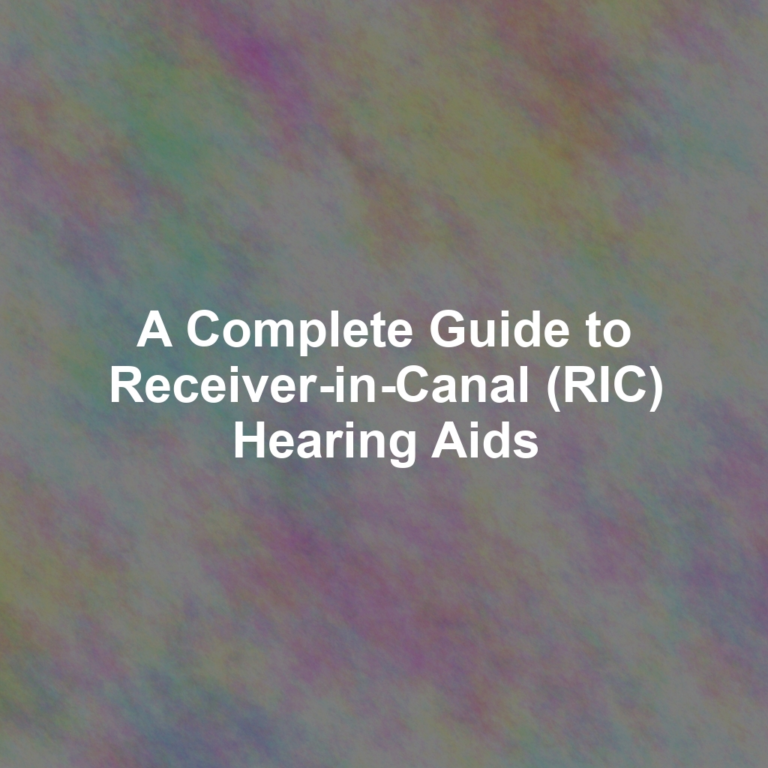Imagine the soft rustling of leaves and the distant chatter of a family picnic filling your ears, all made possible by the small, yet powerful device tucked discreetly behind your ear.
As you consider investing in a Behind-the-Ear (BTE) hearing aid, youG??ll find that the market offers a symphony of models, each with its own price tag that strikes a chord between basic functionality and advanced features. YouG??re faced with a myriad of factors that sway the costG??technology levels, brand reputation, and additional services to name a few.
While itG??s tempting to lean towards the most economical option, you must weigh the long-term benefits against immediate costs. As you navigate this intricate landscape, youG??ll want to uncover the hidden nuances that dictate the true value of a BTE hearing aid.
So, letG??s explore what drives the dollars and cents behind these life-enhancing devices and how you can make a sound investment in your auditory health.
Understanding BTE Hearing Aid Costs
When exploring the costs of BTE (Behind-The-Ear) hearing aids, itG??s crucial to consider the wide array of factors that influence price. YouG??ll find that the technology level, brand reputation, and additional features play significant roles in determining the cost. Basic models, providing essential hearing support, might start at several hundred dollars, while advanced devices, equipped with cutting-edge features such as Bluetooth connectivity or noise reduction capabilities, can climb well into the thousands.
YouG??ve also got to factor in the professional fees associated with purchasing a BTE hearing aid. YouG??re not just buying a product off the shelf; youG??re investing in a comprehensive service that includes a hearing test, fitting, and follow-up adjustments. These services, provided by audiologists or hearing aid specialists, are critical to ensure your hearing aid works effectively for your specific needs.
DonG??t forget about maintenance costs, either. Batteries, repairs, and routine servicing add up over time. Some retailers offer warranties or service plans that can mitigate these ongoing expenses, but youG??ll need to account for them when budgeting for your BTE hearing aid.
In short, while sticker shock can be real, remember that youG??re paying for a combination of sophisticated technology, professional expertise, and aftercare that together enhance your quality of life.
Basic Vs. Advanced BTE Models
Understanding the cost implications of BTE hearing aids sets the stage for comparing basic and advanced models to determine which best aligns with your needs and budget. Basic BTE models offer essential features and are typically more affordable, making them a practical choice if youG??re looking for a straightforward solution to your hearing challenges. On the other hand, advanced BTE models come with a steeper price tag but provide cutting-edge technology and features that can significantly enhance your hearing experience.
When youG??re faced with the decision between basic and advanced BTE hearing aids, consider these emotional touchpoints:
- The joy of clear conversations with loved ones, thanks to advanced noise reduction features.
- The comfort of personalized settings that adapt to your environment, available in sophisticated models.
- The confidence of wearing a discreet, modern design that advanced BTE aids often offer.
- The peace of mind knowing youG??ve chosen a device that can grow with your needs, possibly found in more advanced options.
Factors Influencing BTE Prices
Several factors impact the price of BTE hearing aids. Technological features like wireless connectivity, directional microphones, and noise reduction capabilities can drive up the price. The more cutting-edge the technology, the heftier the price tag is likely to be.
Brand reputation also plays a significant role. Well-established brands often charge more due to their perceived reliability and the quality of their products. YouG??re not just paying for the device; youG??re investing in the brandG??s legacy of innovation and customer satisfaction.
Professional services such as hearing tests, custom fittings, and follow-up care can affect the overall cost. These services ensure that your hearing aid is tailored to your specific needs, providing you with the best possible hearing experience. DonG??t overlook the value of these services; theyG??re essential for optimizing the performance of your BTE hearing aid.
Tips for Cost-Effective BTE Purchases
While factors like technology and brand influence BTE hearing aid costs, there are strategies you can employ to ensure your purchase is more affordable. DonG??t let the price deter you from finding the help you need to fully engage with the world around you. Here are heartfelt tips to navigate the financial side of hearing health:
-
Shop around and compare prices: DonG??t settle for the first offer. Look around and find the best deal for your needs. Your diligence could lead to significant savings.
-
Check for insurance coverage: Your insurance might cover part of the cost. Imagine the relief of having that financial support.
-
Look into financing options: Many providers offer payment plans. Picture easing the burden with manageable monthly payments.
-
Seek out discounts or assistance programs: There might be organizations willing to help. Envision the joy of regaining the full spectrum of sounds without the stress of high costs.
Navigating Insurance and BTE Aid Coverage
Navigating the maze of insurance policies for BTE hearing aid coverage can be daunting, but itG??s crucial to unlocking potential savings on your hearing health investment. Start by thoroughly reviewing your insurance planG??s benefits booklet G?? itG??s your roadmap to understanding whatG??s covered. DonG??t hesitate to call your insurance provider for clarification on specific terms and conditions. TheyG??re there to help you figure out your entitlements.
You should also check if your insurance plan requires a referral from a primary care physician or an audiologistG??s evaluation before it covers the cost of a BTE hearing aid. Some plans might only cover hearing aids up to a certain cost, while others may have a fixed amount they contribute regardless of the total price.
DonG??t overlook other possible avenues for assistance, such as Flexible Spending Accounts (FSAs) or Health Savings Accounts (HSAs), which allow you to use pre-tax dollars for medical expenses, including hearing aids. Additionally, investigate whether your state offers any supplementary programs; many have mandates in place to help offset the cost of hearing aids for both children and adults.
Conclusion
As you explore BTE hearing aids, remember that prices vary widely, influenced by technology levels and features. Basic models are more affordable, while advanced ones hit the wallet harder. To save money, look for deals and consider your must-have features.
DonG??t forget to check your insurance coverage; it can significantly reduce your out-of-pocket costs. Investing in a BTE hearing aid is an investment in your quality of life, so choose wisely and seek value for your money.









